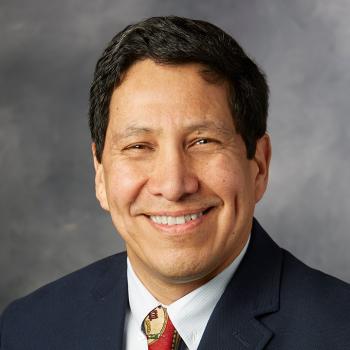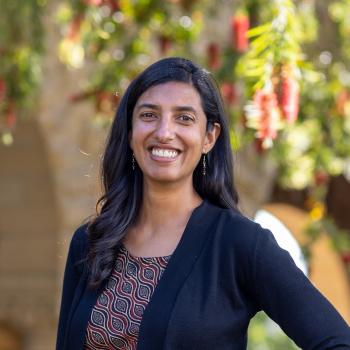Researchers who study long COVID say its debilitating symptoms are often misdiagnosed by clinicians and dismissed by employers or loved ones because so little is known about the new syndrome. The results can be devastating for individuals and their families -- and for the economy.
It reminds Stanford Medicine's Hector Bonilla, MD, of another little-understood condition that the medical world still struggles to treat correctly.
"I've been working on chronic fatigue syndrome for almost eight years; when long COVID came along it was like déjà vu," said Bonilla, a clinical associate professor and an infectious disease physician who is a co-director of the Stanford Post-Acute COVID-19 Syndrome Clinic. "This is nothing new. We've been ignoring these problem for decades -- so it's time to pay attention."

Nearly 1.2 million people have died from COVID-19, accounting for 2.2% of all deaths since the pandemic began, according to the Centers for Disease Control and Prevention. The CDC believes at least 5,000 people have died from long COVID, but it is trying to get a better account by issuing new autopsy guidelines for reporting long COVID as the cause of death.
Today, an estimated 16 million working-age people have long COVID, 4 million of whom can't work due to the debilitating symptoms. One of the worst things a long COVID patient can hear from their primary care physician, said Bonilla, is that they just need more sleep and to improve their diet and exercise. This attitude, he said, recalls the early days of CFS, when more physical activity was a common recommendation.
Long COVID and chronic fatigue syndrome symptoms are similar: severe exhaustion, brain fog, chest pain, coughing and difficulty breathing. Some patients experience cardiac and gastrointestinal issues, as well as loss of taste and smell and elevated levels of depression and anxiety.
Bonilla was joined recently by Gopi Shah Goda, PhD, a health economist who is a senior fellow at the Stanford Institute for Economic Policy Research at the Stanford Health Policy Forum on long COVID, facilitated by Paul Costello, adjunct lecturer in the Division of Primary Care and Population Health. While Gods is researching the economic impact of the syndrome, Bonilla is focused on helping patients and letting them know they are not alone.
"You have to validate them," Bonilla said. "You have to say, 'Yes, I hear you and you are not alone; there are millions of people with the same problems you're having.'"
He said he's seen patients who have lost their homes and are living out of their cars, couples who are divorcing because one spouse doesn't believe the other is truly sick.
The economic impact
Goda calculates that on top of the quarter-million people of working age who died from COVID-19, at least twice that number have disappeared from the workforce. In a study published by the Journal of Public Economics, Goda estimates the average individual earnings loss due to long COVID-19 is $9,000 and the total lost labor supply has amounted to $62 billion annually.

That's nearly half of the estimated productivity losses from cancer or diabetes. Yet, the Stanford experts say, those diseases receive billions of research dollars annually while long COVID research remains woefully underfunded.
"If you think about the budgets for some of the parts of the NIH [National Institutes of Health] that are funding research on cancer and diabetes, it's in the billions, and the amount that has been invested in long COVID is more in the millions," Goda said.
Stanford's long COVID clinic, which opened in May of 2021, received a grant last year of $1 million annually for five years from the U.S. Department of Health and Human Services to expand access to care for people with long COVID -- particularly those from underserved, rural, vulnerable and minority populations that were disproportionately impacted by the pandemic.
Goda believes many long COVID sufferers are falling through the cracks because clinicians aren't certain how to categorize their illnesses, so workers could be losing out on disability insurance through their employers or Social Security Disability Insurance.
The COVID-19 public health emergency expired in May 2023, and the CDC earlier this month lifted the five-day isolation guidance for those who test positive for COVID-19. Both Bonilla and Goda said they hoped this would not lead to relaxations that make workers more vulnerable, particularly those who have no access to paid leave.
No approved treatment but hope on horizon
Experts say 37% of COVID survivors report having at least one long COVID symptom in the 90 to 180 days after their initial infection.
But like chronic fatigue syndrome, there are no tests or approved treatments for long COVID, though Bonilla said he's seeing some positive results in his clinic by treating patients with off-label, low-dose naltrexone -- a pain reliever and anti-inflammatory -- and low doses of the antipsychotic drug Abilify.
There are also efforts to raise awareness about the need for more research that could lead to a cure. March 15 marked the second annual Long COVID Awareness Day, and the NIH is eager to get people with long COVID to join its CureID research program.
In addition, the U.S. Senate Committee on Health, Education, Labor and Pensions held a hearing in January on long COVID, with committee chair Sen. Bernie Sanders (I-Vermont) acknowledging that Congress needs to do more.
"There's a sense that something is going on in America which is serious that we're not addressing," Sanders said. "So I just want to say to our panelists and all those who are dealing with long COVID: We hear you what you're experiencing, and we take it seriously. We think we Congress has not done anywhere near enough, and we hope to turn that around."
Goda submitted a statement to the committee for that hearing, emphasizing the need for more mitigation policies and programs to help workers remain in the workforce.
More news on long COVID
- Stanford Medicine clinical trial goals: Meet long COVID head-on, treat it and defeat it
- Nasal injections could treat long-term COVID-19-related smell loss
- Lung disease and antibody levels contribute to long COVID, Stanford researchers find
- Runaway immune reactions cause long COVID breathing problems
"Despite COVID's harmful impact on the U.S. workforce overall, there are some signs of good news," she said in her statement. "So far, employment and labor force participation rates increased faster among those who report having a disability, likely because of new opportunities to work from home and the tight labor markets."
She noted there are also lower rates of COVID-19 related work absences. Between January and October of 2023, likely COVID-19 related absences from work were 16% higher than pre-pandemic levels. This was a sharp drop from 61% during March 2020 through December 2022.
Still, Bonilla said, while long-COVID may be getting more national recognition, many patients don't have access to health care or live far from clinics, such as native Americans, those in rural communities, and undocumented workers.
"There are people who have no voice, and nobody is talking about them," he said.
Beth Duff-Brown is the communications manager for Stanford Health Policy
Image: Donkeyworx






